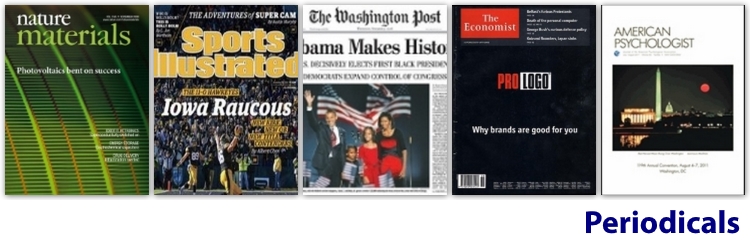|
Summary: Periodicals, also called serials, are titles published more than once throughout the year (e.g., daily, weekly, monthly). Three main categories of periodicals exist, each with a different purpose and audience in mind. To find those titles to which SPC specifically subscribes, you can search and gain their access through Journal Search.
|
|
Popular Sources
- Popular sources include news and magazines.
News includes the latest information on general interest topics, such as political events, crime, sports, and arts/entertainment.
- Magazines include in-depth articles on current events (e.g., Newsweek or Time) or specific interests (e.g., Car & Driver, Sports Illustrated, or The Economist).
|
|
Trade Publications
- These are often referred to as trade journals or trade magazines.
- The target audience for trade publications is business and industry professionals.
- The content is written by representatives in the specific field the publication covers.
- The articles are relatively short and focus on trends, products, and organizational news.
- Examples include APA Monitor, Advertising Age, Investment Week, and Mediaweek.
|
|
Scholarly Sources
- Scholarly sources include academic and peer-reviewed journals, written by expert researchers for students, researchers, and scholars studying the field the journal covers.
- Journal articles present original research, theory, experimentation, methodology, or application and practice within a niche field.
- Peer-reviewed journals--sometimes referred to as academic, refereed, or juried journals--include scholarly articles reviewed by an editorial board and a committee of academic peers or referees prior to their acceptance for publication. These reviewers must agree that the article represents properly conducted original research or writing before publication.
- Examples include American Psychologist, College English, JAMA, and Nature.
Note: Databases often have features that limit your results specifically for Peer Reviewed Journals. See and enlarge the thumbnail, at left, from EBSCO database search interfaces.
|

